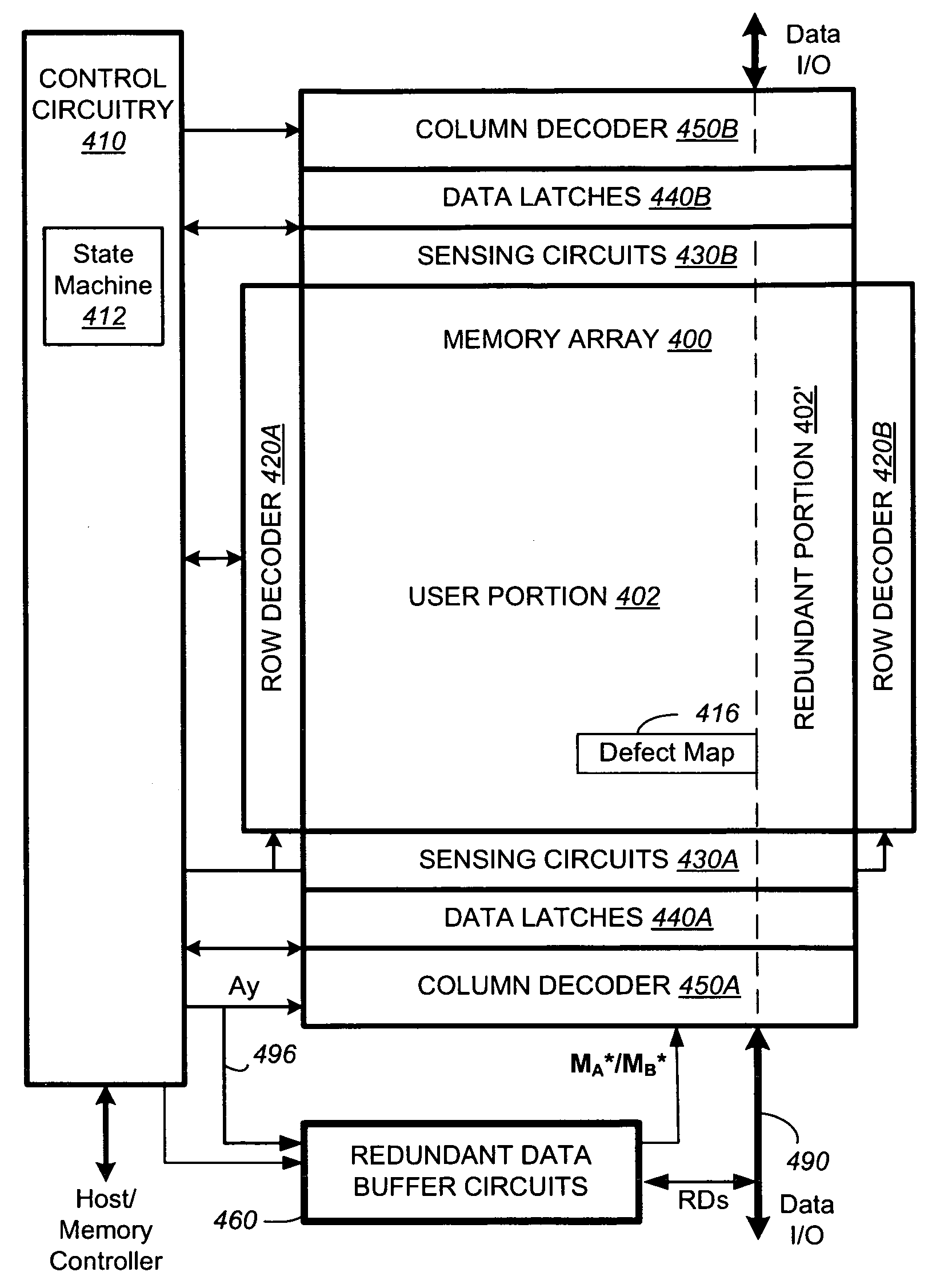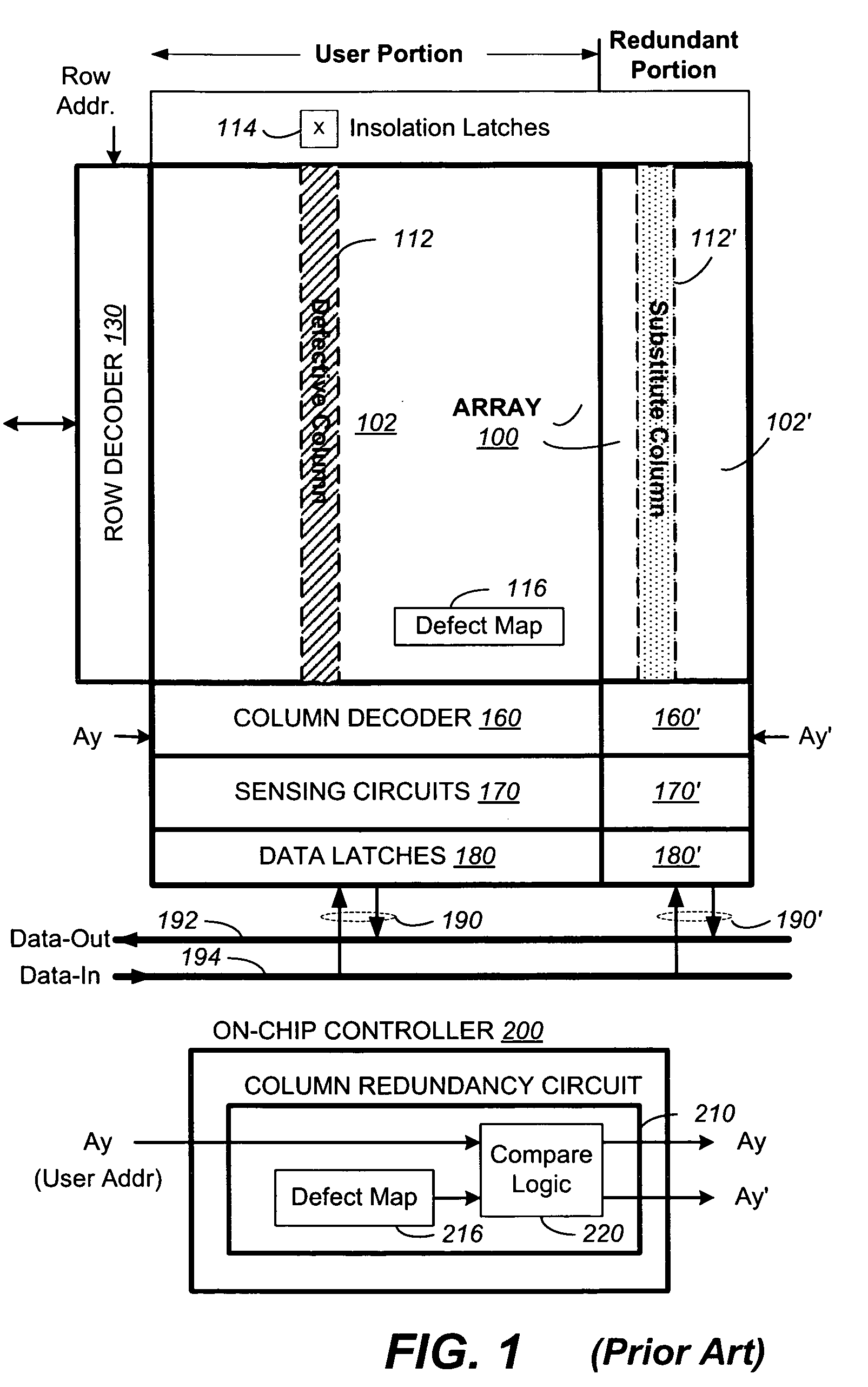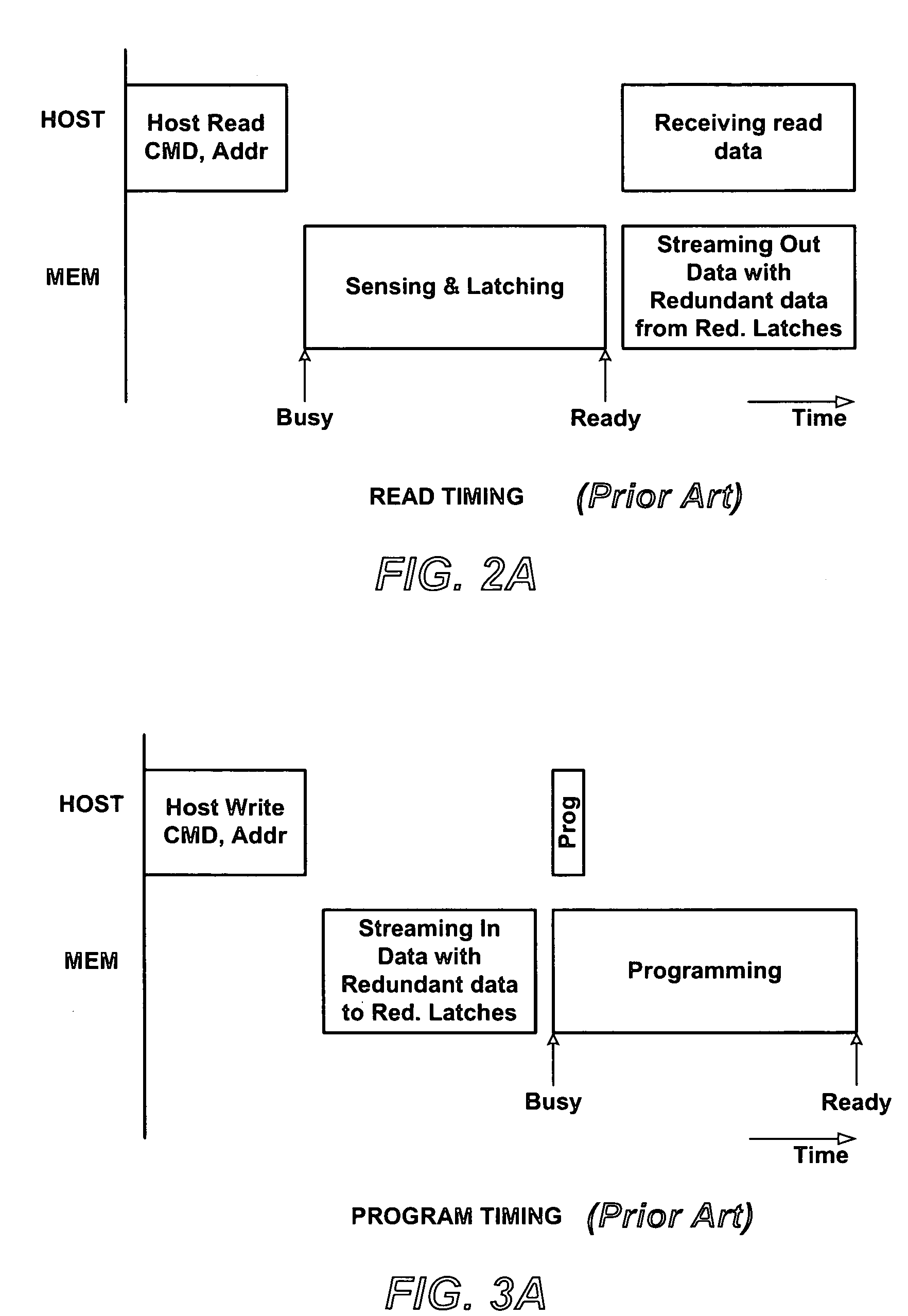Non-volatile memory with redundancy data buffered in remote buffer circuits
a buffer circuit and non-volatile technology, applied in digital storage, building locks, instruments, etc., can solve the problem of not being able to use any odd redundant columns, and achieve the effect of reducing the number of redundant storage space and maximizing the utilization of redundant storage spa
- Summary
- Abstract
- Description
- Claims
- Application Information
AI Technical Summary
Benefits of technology
Problems solved by technology
Method used
Image
Examples
Embodiment Construction
[0035]A preliminary description of a typical memory employing column redundancy is useful to distinguish from the present invention.
Conventional Localized Redundant Data Scheme
[0036]FIG. 1 illustrates a memory device with a conventional scheme of column redundancy in which redundant data is available only from the redundant portion. The memory device has an array of memory cells 100 which is partitioned into a user portion 102 and a redundant portion 102′. The memory cells in the array 100 are accessible by a set of word lines along a row and a set of bit lines along a column. The set of word lines is selectable by a row address via a row decoder 130. Similarly, the set of bit lines is selectable by a column address via a column decoder 160. Typically, a page of memory cells along a row is read or written together by a corresponding set of sensing circuits 170. A corresponding set of data latches 180 is used to latch the page of data that has been read from the memory or that are to...
PUM
 Login to View More
Login to View More Abstract
Description
Claims
Application Information
 Login to View More
Login to View More - R&D
- Intellectual Property
- Life Sciences
- Materials
- Tech Scout
- Unparalleled Data Quality
- Higher Quality Content
- 60% Fewer Hallucinations
Browse by: Latest US Patents, China's latest patents, Technical Efficacy Thesaurus, Application Domain, Technology Topic, Popular Technical Reports.
© 2025 PatSnap. All rights reserved.Legal|Privacy policy|Modern Slavery Act Transparency Statement|Sitemap|About US| Contact US: help@patsnap.com



